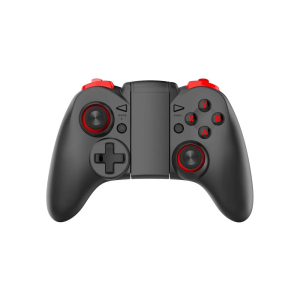Google has announced four new smartphones recently, including its new compact flagship. The device in question is the Pixel 10 Pro, and in this article, we’ll compare it to a compact flagship from Apple. In other words, we’ll be comparing the Google Pixel 10 Pro vs Apple iPhone 16 Pro. The iPhone 17 Pro is right around the corner at this point, as Apple will host its iPhone event on September 9. Still, at this point in time, the iPhone 16 Pro is the best Apple has to offer… in terms of compact phones.
We will kick things off by listing the specs of both phones. Following that, we’ll compare their designs, displays, performance, battery life, cameras, and audio output. Even though these two phones are generally different and run different platforms, there are some similarities here. Like design similarities, for example. We’ll talk about all that below, so… let’s get started, shall we?
Specs
Google Pixel 10 Pro

Apple iPhone 16 Pro
| Google Pixel 10 Pro | Apple iPhone 16 Pro | |
|---|---|---|
| Dimensions | 152.8 x 72 x 8.6 mm | 149.6 x 71.5 x 8.3 mm |
| Weight | 207 grams | 199 grams |
| Display | 6.3-inch Super Actual LTPO OLED display | 6.3-inch LTPO Super Retina XDR OLED (1-120Hz) |
| Refresh rate | Smooth Display (1-120Hz) | 1-120Hz (adaptive) |
| Resolution | 2856 x 1280 | 2622 x 1206 |
| Chipset | Google Tensor G5 | Apple A18 Pro |
| RAM | 16GB (LPDDR5X) | 8GB |
| Storage | 128GB/256GB/512GB/1TB (UFS 4.0) | 128GB/256GB/512GB/1TB (NVMe) |
| Main camera | 50MP (f/1.68 aperture, 1/1.3-inch sensor size, 82-degree FoV) | 48MP (wide, f/1.8 aperture, 1/1.28-inch sensor size, 1.22um pixel size, dual pixel PDAF, sensor-shift OIS) |
| Ultra-wide camera | 48MP (f/1.7 aperture, 1/2.55-inch sensor size, 123-degree FoV) | 48MP (f/2.2 aperture, 1/2.55-inch sensor size, 0.7um pixel size, PDAF) |
| Telephoto camera | N/A | N/A |
| Periscope telephoto camera | 48MP (f/2.8 aperture, 1/2.55-inch sensor size, 5x optical zoom, 22-degree FoV) | 12MP (f/2.8 aperture, 1/3.06-inch sensor size, 1.12um pixel size, dual pixel PDAF, 3D sensor-shift OIS, 5x optical zoom) |
| Selfie camera | 42MP (f/2.2 aperture, 103-degree FoV) | 12MP (f/1.9 aperture, 1/3.6-inch sensor size, 1.0um pixel size, PDAF, OIS) |
| Battery size | 4.870mAh | 3,582mAh |
| Charging | 30W wired, 15W Qi2 wireless (charger not included) | 38W wired, 25W MagSafe wireless, 15W Qi2 wireless (charger not included) |
| Colors | Moonstone, Jade, Porcelain, Obsidian | Black Titanium, White Titanium, Natural Titanium, Desert Titanium |
Google Pixel 10 Pro vs Apple iPhone 16 Pro: Design
Both of these phones are kind of boxy, in general. Yes, they both have rounded corners, but their front side, back side, and frame are all flat. The Pixel 10 Pro is made out of aluminum and glass, while Apple used titanium and glass to make the iPhone 16 Pro. The Google Pixel 10 Pro includes a centered display camera hole, while the Apple iPhone 16 Pro has a pill-shaped cutout on the front, the so-called Dynamic Island. Both phones have uniform bezels around their displays, but the ones on the iPhone 16 Pro are thinner.
On the right-hand side of the Pixel 10 Pro, you’ll find all of its physical keys. The power/lock button sits above the volume up and down keys. The iPhone 16 Pro has a lot more buttons. It has a power/lock key on the right, along with the Camera control button. On the left, its volume rocker keys are located, along with the Action key. Things are quite different on their backplates.
The Pixel 10 Pro includes a camera visor in the upper portion of its backplate. That camera bar is horizontal and has a pill shape. It protrudes on the back quite a bit and includes three cameras. The iPhone 16 Pro, on the flip side, has three cameras inside a camera island. Those cameras sit in the top-left corner with Apple’s known layout. Both phones are IP68 certified for water and dust resistance. Both of them are quite slippery. The iPhone 16 Pro is a bit shorter, narrower, and thinner, though the difference is marginal. It is also slightly lighter, by 8 grams.
Google Pixel 10 Pro vs Apple iPhone 16 Pro: Display
The Google Pixel 10 Pro features a 6.3-inch LTPO OLED display. That panel is flat, and it has an adaptive refresh rate (1-120Hz). HDR10+ content is supported here, while the peak brightness the display offers is 3,300 nits. The screen-to-body ratio is at around 87%, while the display aspect ratio is 20:9. The resolution here is 2856 x 1280 pixels. Corning’s Gorilla Glass Victus 2 protects this panel.

The Apple iPhone 16 Pro, on the flip side, has a 6.3-inch LTPO Super Retina XDR OLED display. This panel is also flat, and its refresh rate is adaptive (1-120Hz). HDR10 content is supported, the same goes for Dolby Vision. The peak brightness here is 2,000 nits. The screen-to-body ratio is at around 90%, while the resolution is 2622 x 1206 pixels. The display aspect ratio is 19.5:9. This panel is protected by the Ceramic Shield glass.
Both of these displays are really good, actually. They’re vivid, sharp, and have great viewing angles. The touch response is really good on both panels too, while the blacks are as deep as you’d expect them to be. Both displays are also well protected, and both of them get bright enough outdoors. The Pixel 10 Pro does technically get a bit brighter, but you won’t lack brightness on either.
Google Pixel 10 Pro vs Apple iPhone 16 Pro: Performance
The Google Tensor G5 SoC fuels the Pixel 10 Pro. That is Google’s new 3nm processor, and the very first TSMC-made Tensor chip. It is paired with 16GB of LPDDR5X RAM inside the Pixel 10 Pro, along with UFS 4.0 flash storage. The iPhone 16 Pro is fueled by the Apple A18 Pro, also a 3nm processor. That chip is paired with 8GB of RAM here, and NVMe flash storage. Neither phone supports storage expansion, by the way.
The Apple A18 Pro is a more powerful chip than the Tensor G5. That goes for both CPU and GPU, actually. The Tensor G5 is made especially for Pixels, though, and it is great when it comes to AI features. We’ve realized that both phones perform admirably during daily use, no matter how intensely you’re pushing them. They will deliver, and you won’t really notice the sheer power difference between the two chips.
Things could be a bit different when it comes to gaming. The iPhone 16 Pro can run pretty much any game from the App Store admirably. It’s the best hardware Apple has to offer at the moment, and the Apple A18 Pro is great with games. The Pixel 10 Pro is not exactly made for gaming, but as long as you’re not planning to play the most demanding games and expect top-notch graphics and performance, it’ll do fine. Heat was not an issue on either phone for us, at least not thus far. Our Pixel 10 Pro review is coming, though, so you’ll get more information soon.
Google Pixel 10 Pro vs Apple iPhone 16 Pro: Battery
Google’s handset includes a 4,870mAh battery on the inside. The iPhone 16 Pro comes with a 3,582mAh battery. Apple’s iPhones usually have smaller battery packs than their Android counterparts, that’s not new. The iPhone 16 Pro does offer really good battery longevity, though, especially considering how compact the phone is. Even power users shouldn’t have a problem getting to the end of the day with this phone.
We’ve also realized that the Pixel 10 Pro’s battery life is very promising. We haven’t really concluded our testing just yet, but thus far the battery life seems to be really, really good. We don’t think that battery life will be an issue for you, even if you’re using your phones more intensely. You can always kill the battery with prolonged gaming and other power-intensive tasks, though, of course.
The Google Pixel 10 Pro supports 30W wired and 15W Qi2 wireless charging. Reverse (wireless) charging is not enabled here, at all, and the magnets may be to blame. The iPhone 16 Pro, on the other hand, supports 38W wired, 25W MagSafe wireless, and 15W Qi2 wireless charging, on top of 4.5W reverse wired charging. Neither phone comes with a charger in the box, but both of them have magnets built in.
Google Pixel 10 Pro vs Apple iPhone 16 Pro: Cameras
You’ll find three cameras on the Google Pixel 10 Pro. A 50-megapixel main camera (1/1.31-inch sensor size) is backed by a 48-megapixel ultrawide snapper (1/2.55-inch sensor size, 123-degree FoV), and a 48-megapixel periscope telephoto camera (1/2.55-inch sensor size, 5x optical zoom).

The Apple iPhone 16 Pro, on the flip side, has three cameras on the back as well. A 48-megapixel main camera (1/1.28-inch sensor size) is backed by a 48-megapixel ultrawide unit (1/2.55-inch sensor size). The third camera on the back of this phone is a 12-megapixel periscope telephoto unit (1/3.06-inch sensor size, 5x optical zoom).
Both of these smartphones are very capable when it comes to camera performance. They have different styles, so the end results are different, but they’re good on both ends. The Pixel 10 Pro takes more contrasty shots, which look more processed. The iPhone 16 Pro shots are closer to real life. Both phones can take really detailed images, with great balance and dynamic range, especially with their main cameras.
The quality does drop when you’re using ultrawide and telephoto snappers, but the end results are still good. That is especially true when it comes to ultrawide cameras. The Pixel 10 Pro does win the zoom shots comparison with ease, actually. It simply does a better job at pretty much all levels. Both phones do a fine job in low light, as long as you’re using the main cameras.
Audio
What about audio? Well, stereo speakers are included on both phones. They may not be the loudest speakers out there, but they’re still loud enough, and the quality of audio output is also really good on both ends.
There is no audio jack on either phone. You will find a Type-C port on both devices, which allows you to connect your wired headphones. When it comes to wireless audio, the Pixel 10 Pro supports Bluetooth 6.0, while the iPhone 16 Pro comes with Bluetooth 5.3 support.
#Google #Pixel #Pro #Apple #iPhone #Pro

 Bluetooth Joystick Gamepad
Bluetooth Joystick Gamepad  Android Mobile Phone
Android Mobile Phone